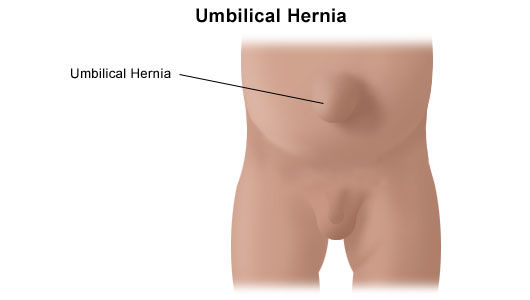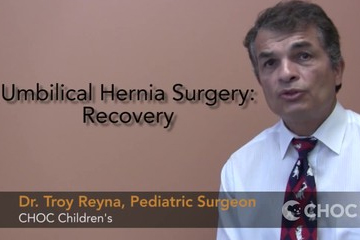Types of Umbilical Hernias
There are different types of umbilical hernias:
- The most common type is a congenital hernia, which is present at birth. Congenital umbilical hernias are more common in girl than boys. They are also more common in premature babies. Congenital umbilical hernias are usually small and do not cause any problems. They often close on their own by the time the child is 5 years old. However, if the hernia does not close on its own, surgery may be necessary to repair it.
- Another type of umbilical hernia is an acquired hernia. Acquired hernias are not present at birth. They develop later in life, usually as a result of increased abdominal pressure. Increased abdominal pressure can be caused by obesity, pregnancy, or heavy lifting. Acquired umbilical hernias can be larger than congenital hernias. They may also cause pain or discomfort. If an acquired hernia does not close on its own, surgery may be necessary to repair it.
Umbilical Hernia Causes
The exact cause of umbilical hernias is not known, but there are a number of factors that may increase the risk of developing an umbilical hernia, including:
- Age: Umbilical hernias are more common in babies and young children.
- Gender: Umbilical hernias are more common in girls than boys.
- Prematurity: Umbilical hernias are more common in premature babies.
- Low birth weight: Umbilical hernias are more common in babies with low birth weight.
- Family history: People with a family history of umbilical hernias are at an increased risk of developing the condition.
- Obesity: Obesity can increase the risk of developing an umbilical hernia.
- Pregnancy: Pregnancy can increase the risk of developing an umbilical hernia.
- Chronic coughing or straining: Chronic coughing or straining can increase the pressure in the abdomen, which can increase the risk of developing an umbilical hernia.
Is an umbilical hernia dangerous?
Umbilical hernias are common and typically are not considered dangerous. With any hernia, there is always a risk of “incarceration.” Incarceration means that things poking through the hole (fat, intestine, or other tissue) get stuck. This can be very painful and can lead to “strangulation.” Strangulation means that the things poking through the hole are so tightly trapped that they do not receive adequate blood flow and can die, potentially resulting in a severe problem for your child.
Fortunately, the risk of incarceration and strangulation with umbilical hernias is extremely low. If you are a parent of a child with umbilical hernia, you should not fear that incarceration or strangulation are likely to happen. Signs and symptoms of incarceration or strangulation include severe pain at the hernia site, redness at the hernia site, and vomiting. Parents can try to reduce the hernia by applying gentle pressure at the site while your child is lying down. If this is not successful, please contact us immediately or come to CHOC’s emergency department.
Umbilical Hernia Repair Surgery and Treatment
Umbilical hernia repair involves a short operation, usually performed on an outpatient basis. Your child will be scheduled for surgery from our office.
Does repair surgery require anesthesia?
Anesthesia requirements include a period of not eating or drinking before the operation. The duration will depend on your child’s age. Your child will undergo a general anesthetic which will put him or her completely to sleep and prevents the sensation of pain. The full risks of anesthesia will be further explained by your child’s anesthesiologist.
Learn how CHOC anesthesiologists are specifically trained in providing anesthesia for children.
How does umbilical hernia repair surgery work?
The operation consists of making an incision near the belly button, usually underneath. The repair is accomplished by placing stitches on both sides of the hole (the hernia) to bring the edges together. The belly button is then tacked down to make it look like an “inny.” Excess skin is often left in place because over time, this results in the best cosmetic appearance. Usually, a dressing is placed over the site which can be removed in four to five days. Surgical glue may also be used to cover the incision. Your child can take a shower but should wait seven days before bathing in a tub.
Umbilical Hernia Surgery Recovery
Once the operation is completed, your child will be taken to the recovery room where monitoring will continue for a short period. This is done to assure that waking up from the anesthetic is done safely. You will be able to go to this area so that waking up is less scary for your child.
Your child may resume all activity after the follow-up visit, which is usually two to three weeks after the surgery. This allows for the repair to become a bit stronger before heavy stress is placed on the repair.
Treatment after repair surgery
Pain management consists of a local injection which helps numb the site for six to eight hours and then oral pain medication such as Tylenol.
Reir surgery follow-ups
Patients should be seen two to three weeks after the operation to evaluate the incision. There are no stitches to remove. There is no need to come back to the office unless specific problems are identified during the first follow-up visit.


























